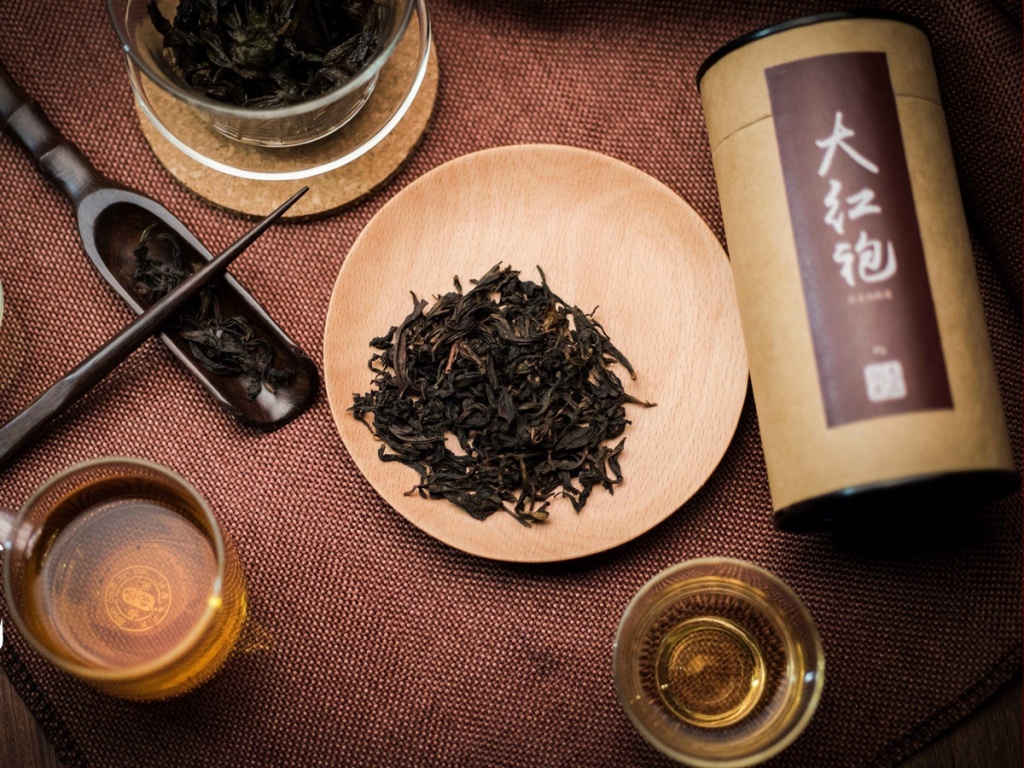Legends of the Big Red Robe: Tea Shrouded in Myth
Big Red Robe (Chinese: 大红袍, pinyin: Dàhóng páo) is one of the ten most famous teas in China. It is a type of oolong tea grown in Fujian Province, in the Wuyi Mountains. It is considered the best tea from these places.
Big Red Robe is not just tea, it is a legend, shrouded in secrets and mysticism. Its history goes back to the depths of centuries, and still arouses keen interest among connoisseurs of Chinese tea.
The Legend of the Tea-Picking Monkeys
One of the most fascinating legends associated with Chinese tea tells of small but incredibly hardworking workers – monkeys. According to this legend, it was they who collected leaves for rare and valuable varieties of tea, including the famous Big Red Robe.
How did it all begin?
In ancient times, when tea plantations were located in hard-to-reach mountainous areas, people faced the problem of harvesting. Tea harvesting is a painstaking task and requires special care. Delicate tea leaves are easily damaged, which can negatively affect the quality of the finished drink. In addition, many tea bushes grew on steep slopes and rocks, which were extremely difficult for a person to reach.
Monkeys are ideal collectors
It was then that people noticed the monkeys that lived in these mountains. These smart and agile animals easily moved through the trees and rocks, collecting wild fruits. Local residents decided to train the monkeys to collect tea leaves.
The monkeys were dressed in red robes to protect them from sharp branches and thorns. They were then trained to find the youngest and juiciest tea buds. The monkeys quickly mastered this work and became indispensable assistants to tea masters.
Why monkeys?
- Agility: Monkeys have incredible agility and flexibility, which allowed them to collect tea leaves even in the most inaccessible places.
- Size: The small size of the monkeys allowed them to carefully pick tea leaves without damaging them.
- Intelligence: Monkeys are very intelligent animals. They learn quickly and are capable of performing complex tasks.
Legend and reality
Of course, this legend is more of a fairy tale than a historical one. However, there is some truth in it. Some historical sources mention that in ancient China, animals were actually used to collect tea.
Although tea is now mostly picked by hand, the legend of the tea-picking monkeys lives on. It reminds us of the close connection between man and nature and that even the most unusual ideas can find their application.
The Legend of the Poor Student
There is a second legend about the origin of Da Hong Pao tea . It is said that in ancient times, a poor student went to the capital to take exams. While passing the Wuyi Mountains, he fell ill and fell on the road. He was noticed by an old monk from the Tianxin Temple (Tianxin Yongle Chan Si (Chinese: 天心永乐禅寺, pinyin Tiānxīn yǒnglè chán sì) - Zen Temple of Eternal Joy), who gave him tea to drink. The student recovered and subsequently passed the exams with flying colors, becoming the most outstanding student and marrying a princess.
One spring, the student returned to the Wuyi Mountains to express his gratitude to the old monk. Accompanied by his entourage, they came to Jiulongkou (Nine Dragons) Pass (Chinese: 九龙窠, pinyin: Jiǔlóng kē). There, on a steep cliff, they saw three tall tea bushes, densely covered with branches and young shoots, which sparkled in the sun with a purple-red light. The old monk said that the previous year, when the student was ill, it was this tea that had helped him recover.
In the past, every spring, when the tea bushes sprouted new shoots, a gong would be struck to summon the monkeys. The monkeys, dressed in red, would climb the rock and collect the tea leaves, which were then roasted and stored. This tea could cure any illness. The student asked to collect some of this tea and take it to the emperor.
The next day, they lit incense in the temple, struck a gong, and called all the monks to go to Jiulongkou Gorge. When they came to the tea bushes, they offered prayers and shouted, "Tea leaves, wake up!" Then they picked the young shoots and carefully processed them. The student took the tea to the capital and presented it to the empress, who was suffering from bloating. After drinking the tea, the empress immediately felt relief. The emperor was very happy and gave the student a large red robe to take to the Wuyi Mountains and present to the tea bushes.
The student returned to the Wuyi Mountains with great pomp. He ordered the imperial robe to be placed over the tea bushes. Strangely enough, when the robe was removed, the young shoots of the three tea bushes glowed red in the sun. People said that the cloth of the robe had dyed them. From then on, the three tea bushes were called the "Big Red Robe." Three large characters for "Big Red Robe" were carved on the cliff. From then on, this tea was presented as a tribute to the emperor every year.
The legend of the Big Red Robe is not just a beautiful story. It reflects the deep connection of the Chinese with nature and tea. Tea in Chinese culture has always been not just a drink, but a symbol of wisdom, longevity and harmony. The legend of the Big Red Robe emphasizes these values and makes this tea even more attractive to connoisseurs of Chinese tea culture.
- Комментарии
- Вконтакте





